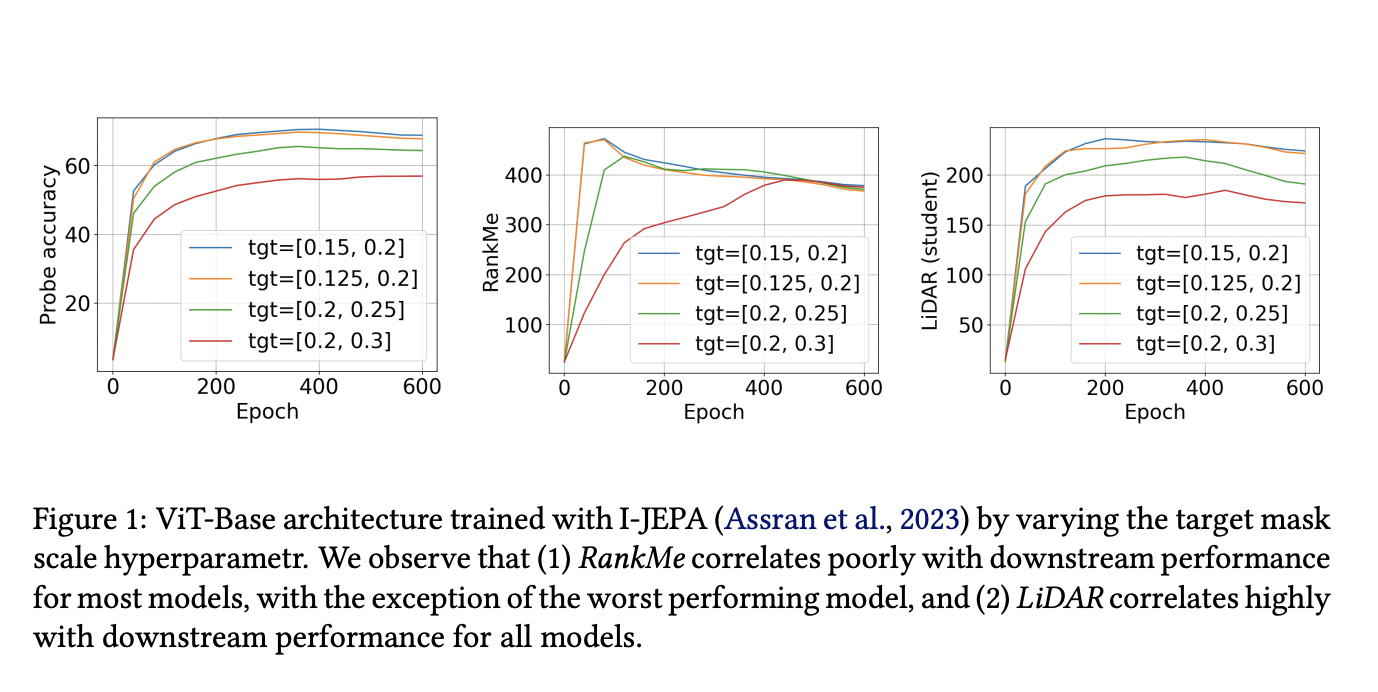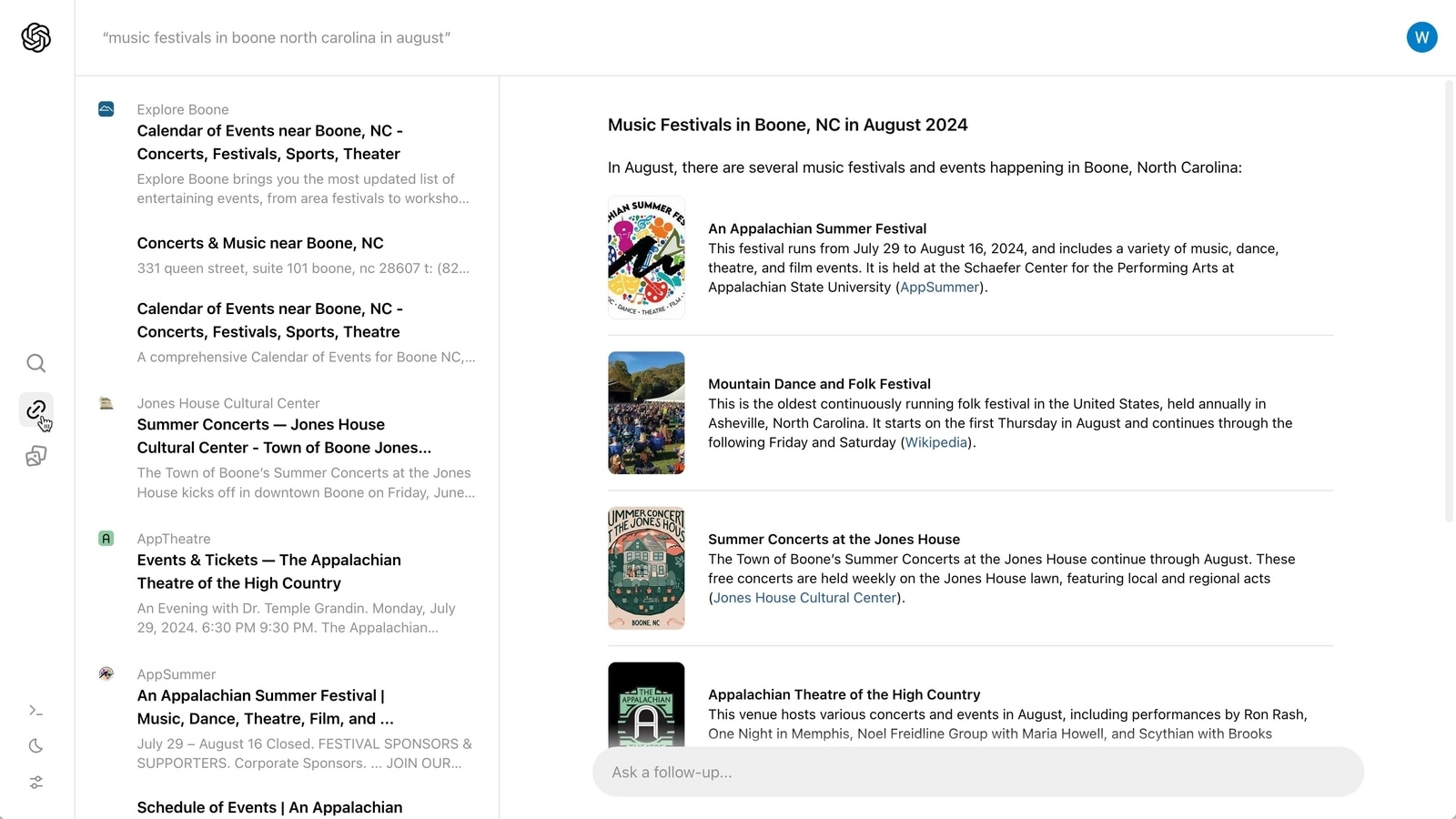Self-supervised learning (SSL) has proven to be an indispensable technique in AI, particularly in pretraining representations on vast, unlabeled datasets. This significantly reduces the dependency on labeled data, often a major bottleneck in machine learning. Despite the merits, a major challenge in SSL, particularly in Joint Embedding (JE) architectures, is evaluating the quality of learned representations without relying on downstream tasks and annotated datasets. This evaluation is crucial for optimizing architecture and training choices but is often hindered by uninterpretable loss curves.
SSL models are evaluated based on their performance in downstream tasks, which requires extensive resources. Recent approaches have used statistical estimators based on empirical covariance matrices, like RankMe, to assess representation quality. However, these methods have limitations, particularly in differentiating between informative and uninformative features.
A team of Apple researchers has introduced LiDAR, a new metric designed to address these limitations. Unlike previous methods, LiDAR discriminates between informative and uninformative features in JE architectures. It quantifies the rank of the Linear Discriminant Analysis (LDA) matrix associated with the surrogate SSL task, providing a more intuitive measure of information content.
LiDAR assesses representation quality by decomposing complex text prompts into individual elements and processing them independently. It employs a tuning-free multi-concept customization model and a layout-to-image generation model, ensuring an accurate representation of objects and their attributes. The experiments are conducted using the Imagenet-1k dataset, with the train split used as the source dataset for pretraining and linear probing and the test split used as the target dataset.
Researchers used five different multiview JE SSL methods, including I-JEPA, data2vec, SimCLR, DINO, and VICReg, as representative approaches for evaluation. To evaluate the RankMe and LiDAR methods on unseen or out-of-distribution (OOD) datasets, researchers used CIFAR10, CIFAR100, EuroSAT, Food101, and SUN397 datasets. LiDAR significantly outperforms previous methods like RankMe in the predictive power of optimal hyperparameters. It shows over 10% improvement in compositional text-to-image generation, demonstrating its effectiveness in addressing complex object representation challenges in image generation.
Given the achievements, it is significant to consider some limitations associated with LiDar. There are instances where the LiDAR metric exhibits a negative correlation with probe accuracy, particularly in scenarios dealing with higher dimensional embeddings. This highlights the complexity of the relationship between rank and downstream task performance and that a high rank does not guarantee superior performance.
LiDAR is a significant advancement in evaluating SSL models, especially in JE architectures. It offers a robust, intuitive metric, paving the way for more efficient optimization of SSL models and potentially reshaping model evaluation and advancements in the field. Its unique approach and substantial improvements over existing methods illustrate the evolving nature of AI and machine learning, where accurate and efficient evaluation metrics are crucial for continued advancements.
Check out the Paper. All credit for this research goes to the researchers of this project. Also, don’t forget to follow us on Twitter and Google News. Join our 36k+ ML SubReddit, 41k+ Facebook Community, Discord Channel, and LinkedIn Group.
If you like our work, you will love our newsletter..
Don’t Forget to join our Telegram Channel
![]()
Nikhil is an intern consultant at Marktechpost. He is pursuing an integrated dual degree in Materials at the Indian Institute of Technology, Kharagpur. Nikhil is an AI/ML enthusiast who is always researching applications in fields like biomaterials and biomedical science. With a strong background in Material Science, he is exploring new advancements and creating opportunities to contribute.










